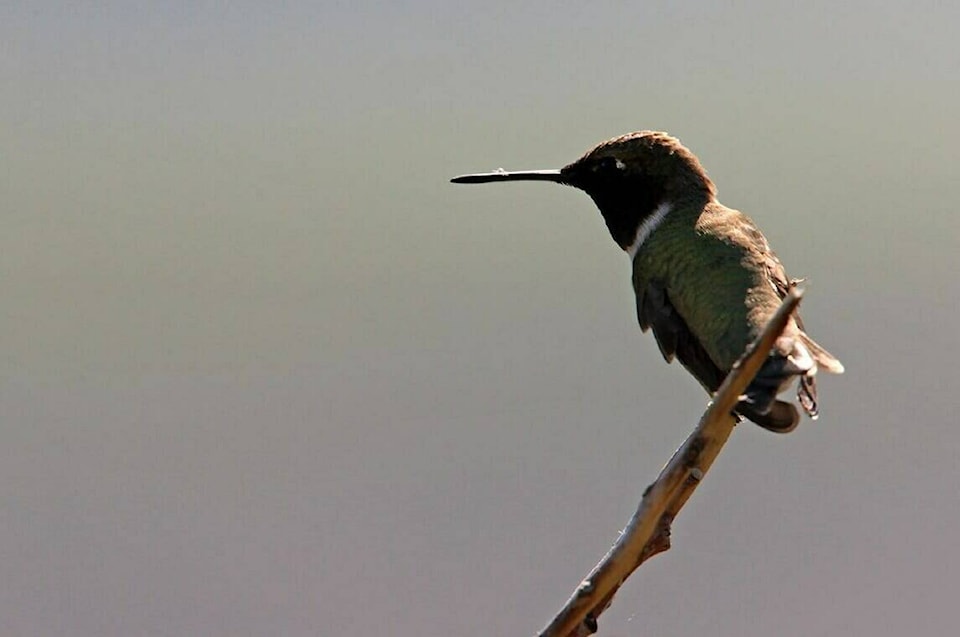During the latest cold winter snap, a B.C. environmental organization is reminding residents to look after their feeders and also to be mindful if anyone finds a seemingly still hummingbird laying on the ground.
Hummingbirds enter a state of torpor in these cold nights. This means that their body temperature lowers, their heart rate slows, and they might be hanging on branches or feeders appearing dead, said Lisa Dreves, stewardship programs coordinator at Langley Environmental Partners Society.
“Please don’t think they are dead… if they are in their state of overnight torpor and found on the ground or where they could be harmed, very, very carefully place them out of harms way but outside,” she warns.
As temperatures drop and it gets colder, the water in the feeders will likely freeze, which prevents the hummingbirds from getting the nutrients they need.
While there are special heaters designed for hummingbird feeders to keep their sugar water food a liquid, Dreves also recommends people have a second feeder that is brought indoors overnight to thaw.
“But they should be placed back outside at the crack of dawn,” she said.
Dreves noted that some hummingbird lovers have multiple feeders to change throughout the day during freezing temperatures.
Feeders should be stocked with a sweet liquid made of four cups of water and one cup of white sugar. Hummingbirds depend on this for energy when their usual food sources are unavailable.
There are two types of hummingbirds that fly around the Lower Mainland. Firstly, the Rufous hummingbirds we see in the warmer months here migrate to California for the winter. The other, Anna’s hummingbirds, spend their winters in Langley and other parts of B.C. Once, they used to spend winters in Washington.
Anna’s hummingbirds eat insects and spiders as well, so Dreves suggests residents maintain their gardens without pesticides, leave the leaves on the ground in the fall, and plant native species to create a natural habitat for all levels of nature.
Avoid using honey, brown sugar, or other sweetener alternatives, as they promote bacterial growth. Feeders should also be cleaned at least once a week to avoid nectar buildup or mold growth.
READ ALSO: 2 raccoons die from injuries in Mission traps, 1 survives at Langley wildlife sanctuary
RELATED: Langley’s Gateway shelter opens daytime warming centre due to cold snap
